If you work with young people, you’ve probably had the condom conversation at some point.
Condoms are one of the simplest and most effective ways to protect against sexually transmissible infections (STIs) and unplanned pregnancies. But despite how important they are, many young people still feel awkward or embarrassed bringing them up. That’s exactly where you come in.
You don’t need to be a sexual health expert. You just need to know the facts, clear up the confusion, drop the shame, and help make the whole topic feel normal. That’s what this guide is here to do — to give you the tools to talk condoms with confidence.
You don’t have to know everything about condoms — but feeling confident with the basics helps you speak with clarity. Let’s start with a quick refresher:
Young people can be bombarded with misinformation — on social media, in peer groups, and sometimes even just old-school myths that never seem to disappear. That’s why one of the most helpful things you can do is bust the myths before they become beliefs.
Here are a few of the most common condom-related myths and how you can counteract them. And remember, how you respond matters just as much as what you say. Keep it simple, factual, and shame-free.
Try: “Good question—lots of people think that, but here’s the truth…” or “Yeah, I’ve heard that one too. But actually…”
For most professionals, this is the trickiest part. You don’t want to overstep, but you also don’t want to miss a moment to educate or support. The goal? Make the conversation with the young people you’re working with feel safe, respectful, and totally normal.
Here are a few opening lines you might want to try. Remember to adapt for your specific context.
It’s not about giving a sex ed lecture — it’s about creating a safe space for young people to ask questions if they have them.
Are things still feeling awkward? That’s where games, activities, and hands-on tools can help, especially with the younger people you work with. The good news is that we’ve got a huge range of resources you can use with groups or one-on-one. These include:
These tools help use play to break the ice, normalise the conversation about condoms and safe sex, and make sure the information sticks.
Cost, embarrassment, and access can all be barriers to young people using condoms. By offering free condoms in a visible, no-fuss way, you can help remove those barriers and normalise safer sex.
Through Play Safe Pro’s Condom Ordering Tool, you can order 144 condoms every month for your service to distribute to young people. Stock up on condoms here.
We hope that this article has helped increase confidence when it comes to chatting all things condoms with young people. The Play Safe Pro Condom Protocol gives even more information, covering everything your service might need to know, including:
Download the Play Safe Pro Condom Protocol.
You don’t need to be a sexual health expert to talk about condoms—you just need to be approachable, informed, and ready to create space for open conversations.
By keeping condoms visible and easy to access, clearing up the common myths, and using the right tools and resources, you’re helping make safer sex a normal part of life for young people.



